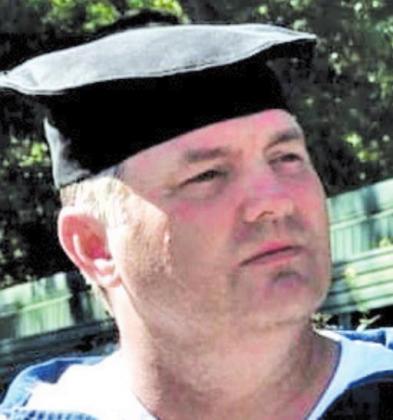LCHC guest speaker on Texas Navy and its role in the Texas Revolution
The Liberty County Historical Commission will hold its quarterly meeting on Monday evening, 6:00 p.m., July 19th, 2021, in the A. J. “Jack” Hartel Building, 318 San Jacinto Street in Liberty, with guest speaker Kevin Plante of Baytown. The public is invited to attend. Mr. Plante is a 5th generation Texan and traces his lineage back to Austin’s Colony; he is a board member of the Baytown Historical Preservation Association and Executive Officer of the 1st Texas Naval Squadron. He has been an active living historian and reenactor since 2010. The 1st Naval Squadron focuses on telling the story of the Texas Navy and maritime history from the 1800s. The Squadron has participated in reenactments at Liendo Plantation, Jefferson, Anahuac, San Jacinto, Goliad, and Galveston; The group also has participated in reenactments in Camp Moore, Pleasant Hill, Louisiana, and Mobil Bay, Alabama. The Squadron was featured in the documentaries Guns of the Texas Revolution, 1st Texas Navy, and San Jacinto. The Squadron typically participates in “Living History” displays at Anahuac Gator Fest, Old River Founders Day, LaPorte Lafitte Pirates Day, and George Ranch Texian Market Days.
By the end of 1835, irregular Texas Military forces had driven the Mexican Garrison across the Rio Grande. Both sides began recruiting new, larger, and better-equipped armies for the more serious and bloody war they knew would ensue. The Texans relied upon adventurers from the United States, and they were not disappointed. Most of the men who died in the Alamo came to Texas in the winter of 1835-1836. Whole companies brought their own arms and equipment in chartered vessels from New Orleans and Mobile. By sea, Texas grew swiftly in strength.
The Mexicans, led by President Lopez de Santa Anna, came north from Mexico City, raised an army, and took personal command of a threepronged attack on Texas. His columns destroyed or drove before them virtually every vestige of the Anglo-American civilization. By March 6th, 1836, the Alamo had fallen; a week later, Goliad succumbed. The only sizable force remaining to the Texans was the haphazardly organized group of less than a thousand men under Sam Houston, the new Commander-in-Chief. This small army retreated steadily before Santa Anna’s troops while keeping close to the sea and between the Mexicans and the fleeing women and children in what Texans termed the “Runaway Scrape.” Texas appeared to be doomed. The Mexican forces had traveled by land thousands of miles and were dependent on fresh troops, provisions, and supplies delivered to them along the coast by their large armada of ships. It was incumbent Mexico control the seas.
However, Texas had begun to build a Navy! The General Council of the provisional government authorized a fleet consisting of four schooners on November 24th, 1835. From this date, the Navy of the Republic of Texas may be said to exist, although formal independence was not declared until March 2nd, 1836.
Several ships were commissioned and cruised between Galveston and Tampico during the first three months of 1836, capturing several small coasters and fishing craft and generally disrupting the vital seaborne communications of Santa Anna’s army. During the crucial months of March and April 1836, the four-ship “fleet” played a decisive role in preserving the independence which Texas had just proclaimed. On March 3rd, the ship Liberty was on a semi piratical cruise to Yucatan when she encountered the Mexican merchant schooner Pelican and captured her under the guns of the fortress at Sisal. The prize proved to contain 300 kegs of powder and other military supplies concealed inside cargo owned by the New Orleans firm of J. W Zacharie. The Pelican ran aground and was lost on the bar at Matagorda, Texas, but her cargo was salvaged and used to good advantage in the San Jacinto campaign. Other ships were similarly seized and falsely manifested cargo was captured and appropriated. Some of these ships had agreed to carry Mexican troops to coastal areas of Texas and were thwarted.
Finally, on April 21st, 1836, General Sam Houston turned on his pursuer, penned Santa Anna’s army against Buffalo Bayou, which it could not cross, and completely destroyed it, capturing Santa Anna himself. Houston’s soldiers justly received credit for the decisive battle of San Jacinto, but nevertheless, the victory could not have been won, or the battle even fought, had temporary naval superiority not been achieved. Santa Anna was trapped due to his need to stay near the sea. Weakness afloat prevented his escape. He was inadequately supplied because his ships could not reach him.
After the victory and into the Republic of Texas era, the Texas Navy continued to play a pivotal part in the defense against Mexico’s effort to reconquer Texas.
Please join the Liberty County Historical Commission and guest speaker, Kevin Plante, to hear this riveting story of the formation and development of the Texas Navy, its important role in the Texas Revolution, and defense of the Republic of Texas! Mr. Plante will appear in a period-correct Texas Navy uniform and is sure to entertain us with this invaluable part of our Texas history and heritage! LCHC meetings are open to all, and the public is encouraged to attend! For more information, please contact County Chair Linda Jamison at lchc318@gmail.com or text 936-334-5813.

